In-Kind Donation Acknowledgement Letter Template
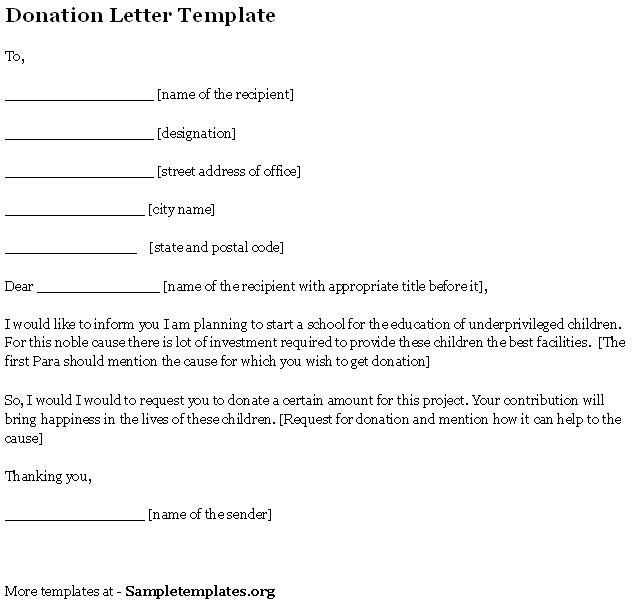
Recognizing the generosity of those who support your cause is essential for maintaining strong relationships and encouraging future contributions. Whether it’s goods, services, or any non-monetary support, a formal expression of thanks is a powerful gesture that can leave a lasting impression. Such messages are not only an opportunity to show appreciation but also to reinforce the value of the help received.
Crafting the right message can be challenging, but with a well-structured approach, you can ensure that your gratitude is conveyed sincerely and effectively. It’s important to highlight the specific items or services provided, acknowledge the impact of the gift, and make the recipient feel valued. This can foster goodwill and strengthen the bond between your organization and supporters.
Properly conveying your thanks is more than a formality–it’s an integral part of building trust and fostering long-term partnerships with those who contribute to your mission. A thoughtful expression of appreciation can inspire continued support and make contributors feel truly recognized for their generosity.
In-Kind Donation Acknowledgement Letter Template
When someone offers support in the form of goods or services, expressing gratitude is essential for fostering a positive relationship. A well-crafted message of thanks not only acknowledges the generosity but also reinforces the value of the contribution. It’s a simple yet impactful way to show appreciation and maintain connections with those who help your cause.
To ensure your message is both professional and heartfelt, it’s important to follow a clear structure. The communication should include details about what was provided, how it will be used, and the impact it will have. By doing so, you can make the recipient feel recognized and appreciated for their effort, making them more likely to continue their support in the future.
While the format may vary depending on the specific situation, the core components remain the same. Start by addressing the individual or organization, provide details about the contribution, and end with a warm, sincere thank you. This approach creates a balanced tone of professionalism and gratitude that leaves a lasting impression.
Importance of Acknowledging In-Kind Donations
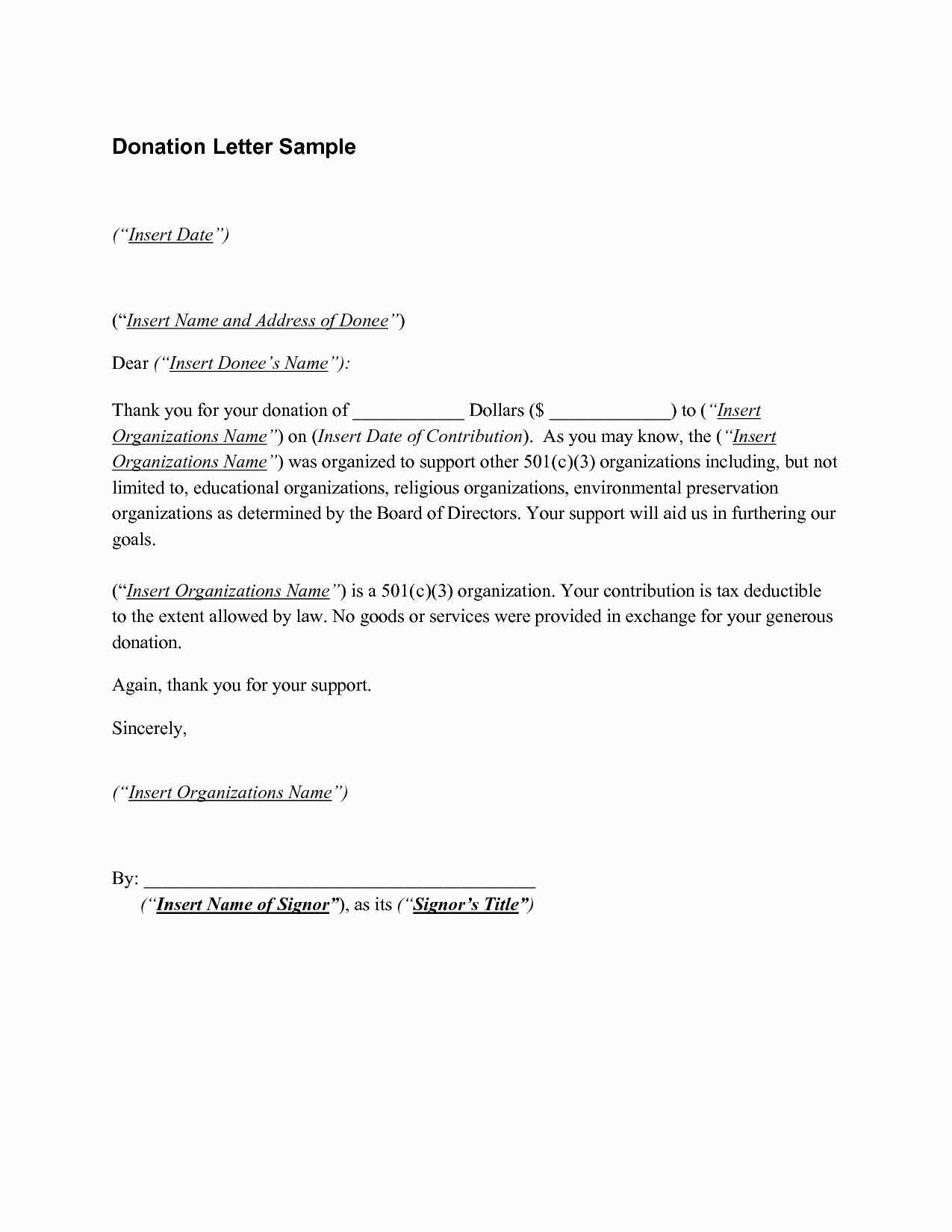
Recognizing the generosity of those who contribute resources, whether physical goods or services, plays a vital role in strengthening relationships and encouraging future support. Acknowledging these gestures demonstrates your appreciation for the contribution, which in turn builds trust and goodwill between the giver and the recipient. It also shows that you value their support and understand the impact of their gesture.
By offering a formal recognition of their contribution, you show that their efforts are not only noticed but also have a meaningful impact on your cause. This type of recognition fosters a sense of connection, making contributors feel more involved and invested in the continued success of your mission. It can also motivate others to follow suit, knowing their contributions will be valued and appreciated.
Furthermore, formal recognition serves as a tool for transparency. It allows organizations to document and publicly show how external resources are being utilized, ensuring that all contributions are accounted for properly. This can build credibility and reinforce the commitment to managing resources responsibly.
Key Elements of a Donation Letter
When crafting a message to express gratitude for a contribution, it is important to include several key components to ensure the communication is clear, sincere, and meaningful. A well-structured message should convey appreciation while also providing relevant details about the contribution and its impact.
- Personalized Greeting: Address the recipient by name to make the message feel more personal and tailored to them.
- Specific Details: Clearly mention what was provided and how it will be used or its potential impact on your cause.
- Expression of Gratitude: Offer sincere thanks for the contribution and emphasize its importance to your mission or organization.
- Impact Explanation: Highlight how the contribution will make a difference, whether in the short-term or long-term.
- Future Engagement: Encourage continued support by inviting the contributor to stay involved or provide further assistance.
By including these elements, your message will not only acknowledge the contribution but also foster a deeper connection with the individual or organization, encouraging ongoing support for your cause.
How to Personalize Your Acknowledgement
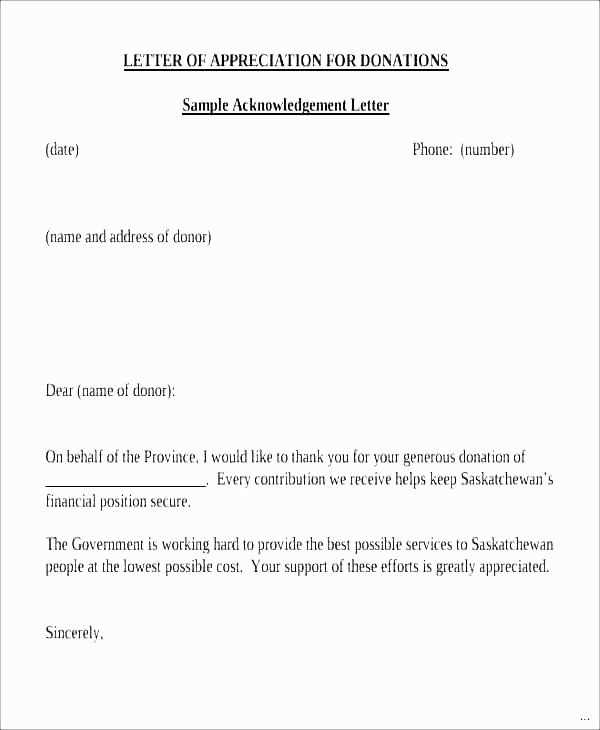
Making your expression of thanks feel personal and thoughtful is crucial to building stronger relationships with contributors. Personalization goes beyond simply recognizing the contribution–it shows that you truly value the individual’s support and have taken the time to acknowledge their specific act of generosity. The more tailored your message, the more likely it is to resonate with the recipient.
To add a personal touch, begin by referencing the specific items or services provided. This not only makes the message feel more authentic, but it also highlights the importance of what was given. For example, instead of a generic thank you, mention how the contribution will be utilized or the direct impact it will have.
Another effective way to personalize your message is by including details about the relationship or history with the contributor. If the individual has supported your cause in the past, acknowledge their continued commitment. You can also reference their personal qualities, such as their generosity or dedication to your mission, to make the message feel more meaningful.
Lastly, always make sure the tone aligns with the recipient’s preferences. Whether formal or casual, adapting your language to suit the person you are addressing helps ensure the message feels genuine and sincere.
Best Practices for Writing a Thank You Letter
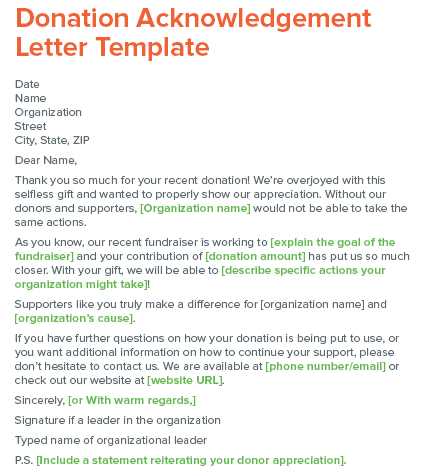
Expressing gratitude for a generous contribution requires more than just a simple acknowledgment. A well-written message ensures the recipient understands the significance of their support and feels valued. Following best practices when drafting this message can help strengthen your relationship and encourage continued involvement.
Key Tips for Crafting an Effective Message
Begin by addressing the person directly and mentioning the specific nature of their contribution. This shows attention to detail and makes the message feel individualized. Be clear about how their help will be used or how it has made an impact. This provides the contributor with a sense of purpose and reinforces their positive action.
It is also crucial to maintain a warm and respectful tone throughout your message. Your words should reflect your appreciation, ensuring the recipient feels recognized and valued. Keep the message concise but sincere, avoiding unnecessary jargon or overly formal language that might make the thank you feel distant.
What to Include in Your Message
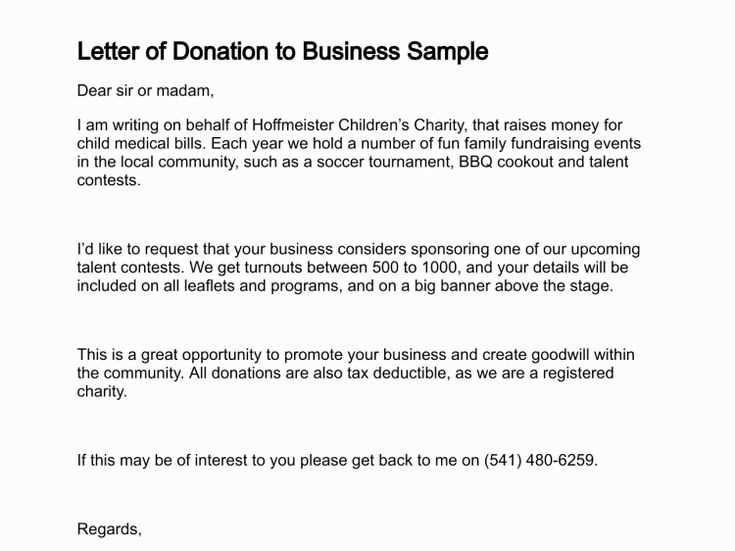
| Element | Description |
|---|---|
| Personalized Greeting | Address the individual by name for a more personal touch. |
| Specific Details | Reference the exact items or services contributed and their intended use. |
| Expression of Gratitude | Clearly communicate how much their support means to your cause. |
| Impact Explanation | Describe the difference their contribution will make, creating a sense of purpose. |
| Warm Closing | End with a heartfelt thank you and an invitation to stay engaged. |
By adhering to these best practices, your message will not only acknowledge the contribution but also foster a deeper, more lasting connection with those who support your cause.
Common Mistakes to Avoid in Letters
While writing a message to express appreciation, it’s easy to make certain errors that can weaken the impact of your words. It’s important to ensure that your communication is clear, sincere, and respectful. Avoiding common pitfalls can make a significant difference in how your message is received.
One of the most frequent mistakes is using vague language. A generic thank you without specific details about the contribution can feel impersonal. It’s crucial to acknowledge the exact nature of the support provided and how it will benefit your cause. This not only shows that you paid attention but also emphasizes the importance of their contribution.
Another mistake is neglecting the tone of the message. A formal or overly stiff tone may come off as insincere, while being too casual can make the communication feel unprofessional. Striking the right balance is key to ensuring the message is respectful yet heartfelt.
Additionally, not including a call to action or future engagement can leave the recipient feeling disconnected. A simple invitation to stay involved or an expression of hope for future collaboration can strengthen the relationship and encourage ongoing support.
Finally, paying attention to grammar and spelling is essential. Errors in writing can undermine the sincerity of the message and create a negative impression. Take time to proofread and ensure that the communication is polished and professional.
Legal and Tax Considerations for Donors
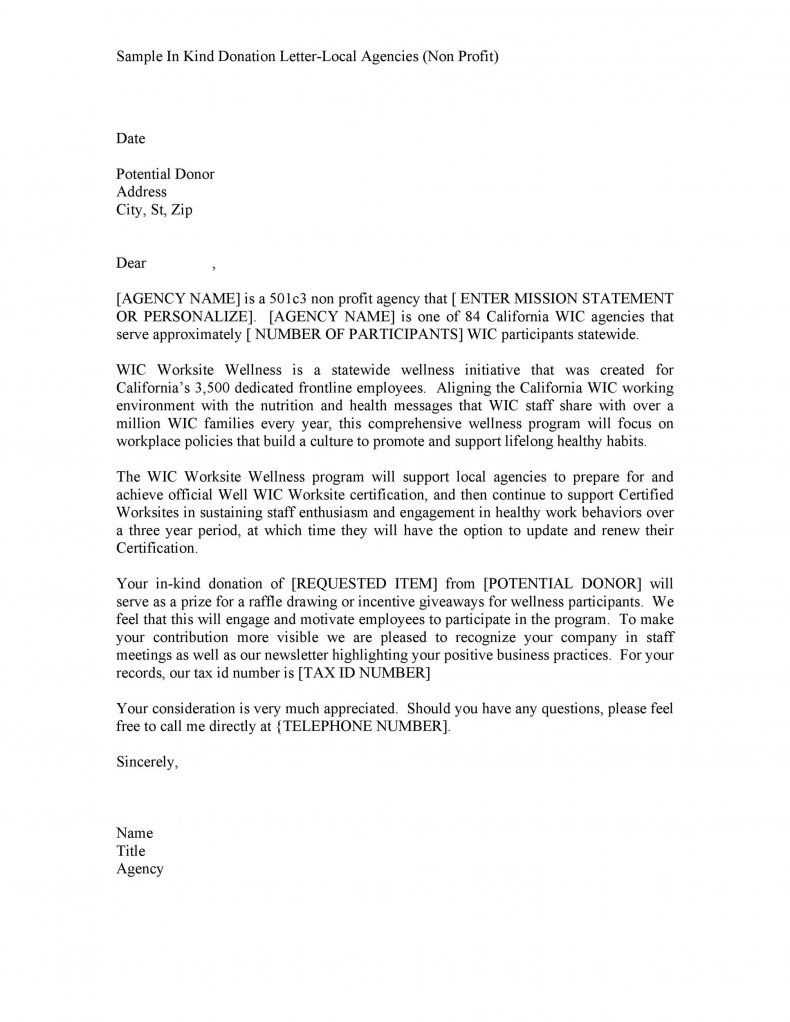
When contributing resources or services, it’s important for contributors to understand the potential legal and tax implications. Ensuring compliance with regulations not only protects donors but also ensures that their generosity is properly recognized. There are various factors to consider to ensure the process remains transparent and beneficial for all parties involved.
Key Tax Implications for Contributors
- Tax Deductions: In many cases, individuals who provide goods or services may be eligible for tax deductions. It’s essential to have the right documentation to claim these deductions, such as receipts or a formal recognition of the contribution.
- Valuation of Contributions: Properly valuing non-monetary contributions is crucial for tax purposes. Donors must accurately assess the fair market value of what is provided to ensure the deduction is appropriate.
- Limits on Deductions: There are limits to how much can be deducted based on the type of contribution and the contributor’s overall income. It’s advisable to consult with a tax professional to understand these thresholds.
Legal Considerations for Givers
- Written Confirmation: Legal documentation is important to establish the terms of the contribution. A formal agreement or receipt helps avoid misunderstandings about the purpose or scope of the gift.
- Transfer of Ownership: When transferring physical assets, it’s essential to clearly define ownership and any rights or responsibilities associated with the contribution. This ensures both the giver and receiver are clear on what is being provided.
- Compliance with Regulations: Different jurisdictions have varying regulations regarding non-monetary contributions. Donors must ensure that they follow local, state, and federal laws to avoid complications.
By understanding the legal and tax considerations involved, contributors can navigate the process with confidence, ensuring their efforts are both rewarding and compliant.